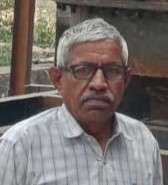
Back in 1982, Rai Singh had set up a kiln for baking bricks which had a capacity of 12000 bricks. He observed that burning wood and other fuels in the kiln produced some gas that was burning more furiously. In 1991, Singh started his workshop repairing tractors, Jeep trucks, and other engines. After observing the increasing demand and price for diesel engines in the agricultural sector, he decided to modify the diesel engine to operate on an economical LPG. After this LPG engine was successful, he considered making an engine that could run on wood-burning gas. Then after a series of experiments, he successfully developed a device that consists of a gasifier that helps convert biomass into producer gas. The conventional diesel engine was then modified with a spark plug and a fuel pump with a distributor setup. The modified diesel engine was running using the gasifier but for a very short time. Singh found the glitch in the device, and impurities in the producer gas and worked out several mechanisms and filtering sieves to develop a filtering mechanism so that gas could be supplied to the modified engine. He successfully developed his biomass gasifier system, reducing maintenance and increasing the capability to operate for 40 hours continuously. The system is a success as it uses all types of wood waste and fuel. Wood stocks of cotton pulses, coconut shells and palm stocks, maize cobs, branches and twigs, various agricultural residues, certain industrial waste of paper, plywood, etc. The reported fuel consumption of the system is 1 kg/kVA, approximately 30 to 35%, less than conventional gasifiers. Singh’s biomass gasifier system has won many awards for sustainable technological development. He was also honored at Rashtrapati Bhavan by NIF. In 2002, he was honored by the gram panchayat, and in 2004 by the district collector. The innovator has also been awarded a national award in the 5th Biennial annual award function.


